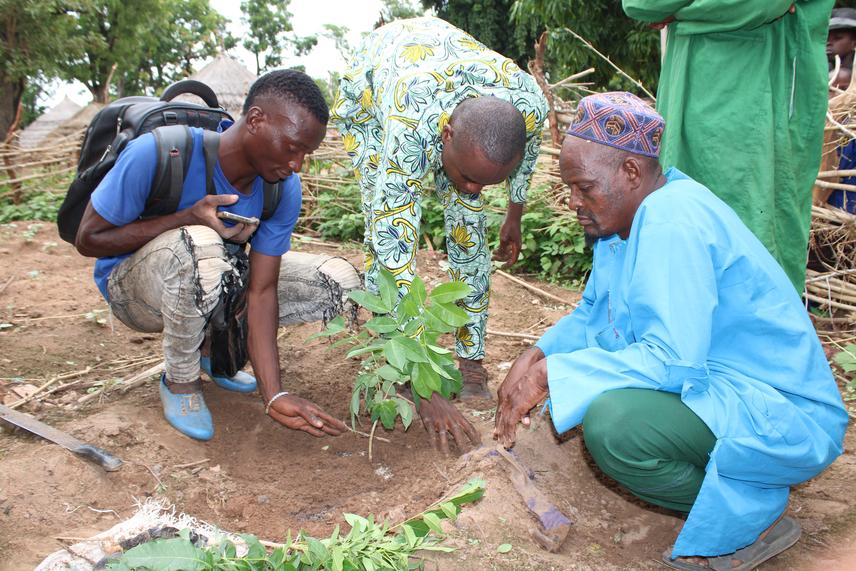Agbatan Marc Koutchoro
Other projects
During our first Rufford Small Grant, we found that more than half of the A. africana trees located in favourable habitats, particularly in the Ouémé Supérieur Gazetted Forest, were pruned 100%, especially those with large diameters. This practice led to a decrease in seeds and, consequently, a reduction in seedling density. Indeed, this protected area, which is highly favourable to the current and future conservation of A. africana in Benin, is located in the Sudano-Guinean zone, a region that hosts transhumant herds from Burkina Faso, Niger, and Nigeria during the dry season (Koutchoro et al., 2022).

Planting of Afzelia africana seedlings with local communities. ©Koutchoro (2024).
These transhumant animals create livestock overstocking, competing with domestic cattle for forage resources. The low productivity of pastures during the dry season makes woody forage crucial for the survival of these transhumant animals due to its high protein, energy, and mineral content (Sidi Imorou et al., 2016; Honvou et al., 2019). This practice, combined with illegal logging, has led to a drastic reduction in the species population in recent years. However, one of the remaining questions is what alternatives exist for the sustainable conservation of A. africana in the context of pastoral breeding? In other words, what agricultural innovation can address the demand for forage to feed animals during the dry season while limiting the pruning of trees in protected areas?
This project aims to develop agro-pastoral alternatives to promote the spread of A. africana in Benin. Local communities will be trained in advanced techniques for nursery production and planting of A. africana. Experiments will be conducted to develop nursery production techniques for forage biomass with A. africana to meet the demand for forage during the dry season and reduce the pruning of large trees in protected areas. We also plan to continue awareness-raising and environmental education actions, as well as reforestation efforts in favourable habitats to increase the density of A. africana and ensure its sustainability.
Header image: Pruning of Afzelia africana. ©Koutchoro (2024).